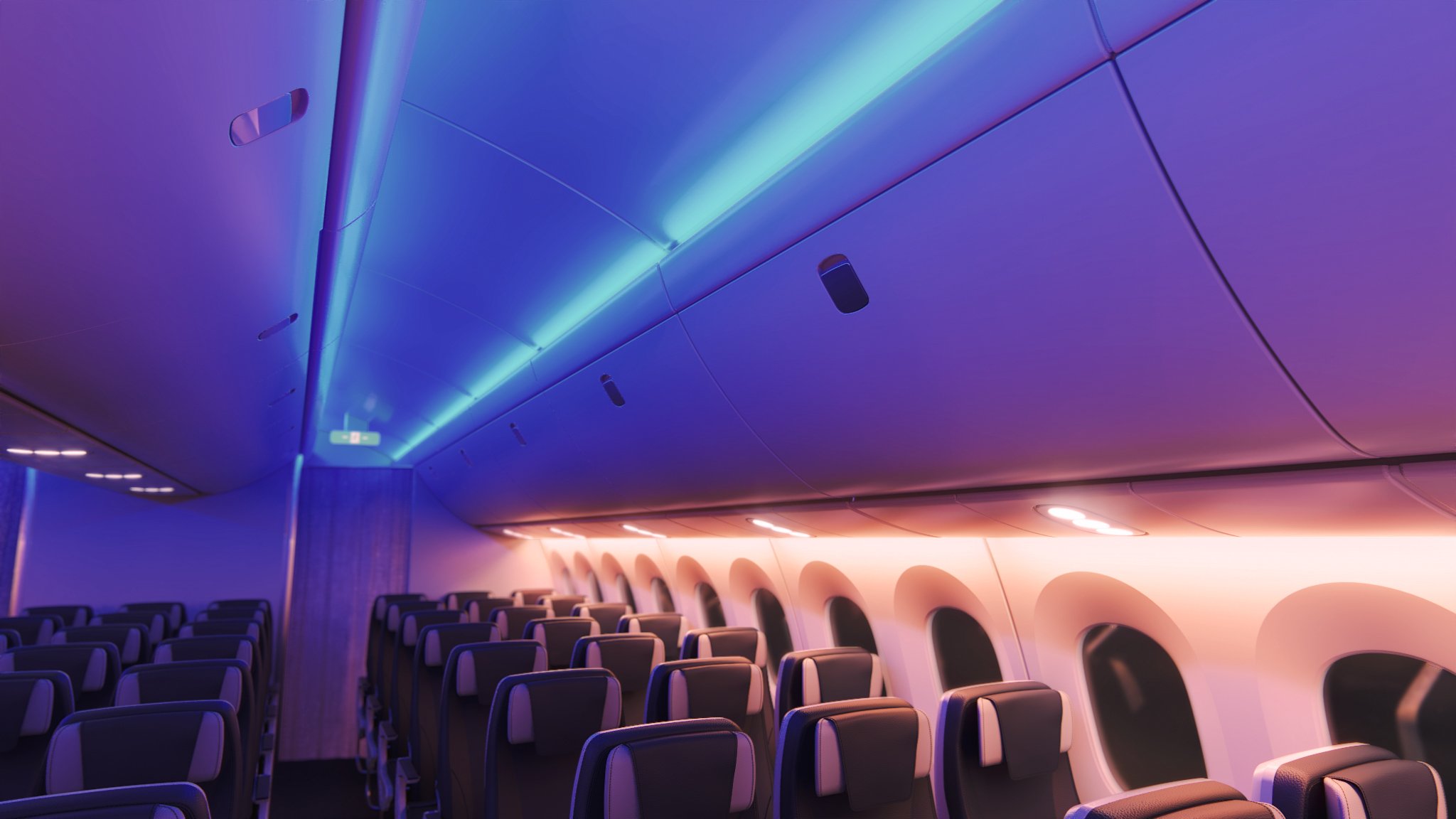
Reducing the effects of Jetlag with light
Introducing Hypergamut™, a true circadian rhythm lighting system
In the brief time since we harnessed the power of flight in the 20th century, the sophistication of air travel has accelerated by leaps and bounds with vast increases in frequency, comfort and perhaps most prominently, access.
Air travel has shrunk the world, with the ability to access nearly every corner of the globe in less than 24 hours. Indeed, the longest non-stop flights clock in at right around 19 hours.
But greater global access combined with longer routes has exasperated an issue the aviation industry has yet to be able to adequately solve: jetlag.
No matter if you’re lounging in a first-class suite or stuck in the middle seat of the back row, you’re likely to experience the daytime drowsiness, fatigue and insomnia that often accompanies quickly crossing two or more time zones.
Effects on long haul travel
Jetlag has been the cause of ruined vacations, botched business meetings, bungled diplomatic missions and lackluster athletic performances. Clinicians go so far as labeling it a temporary sleep disorder, with sufferers altering their travel plans to account for symptoms or attempting to self-medicate with caffeine or alcohol. In solving flight we’ve unwittingly created a new problem.
“It’s an issue that almost everyone, particularly those on long haul flights, deals with at varying levels of severity,” said Eric Johannessen, a technical fellow for lighting electronics at Collins Aerospace.
Johannessen has worked in electrical and LED engineering, design and systems integration for most of his career. In his 13 years at Collins, he’s been an electrical engineer and led the research and development of lighting systems before assuming his current role as a technical fellow. His fingerprints are scattered across Collins’ most significant lighting innovations of the past several years.
“Developing this lighting solution that reduces the effects of jetlag and has such an outsized positive influence on traveler well-being and comfort has been incredible,” says Johannessen. “It’s the most exciting thing I’ve ever worked on in my career – definitely my favorite and most impactful project.”
Solving for jetlag
Johannessen is referencing Collins’ newly introduced Hypergamut™ Lighting System. The proprietary full cabin lighting system increases the number of colored LEDs used in traditional cabin lighting systems, utilizing a wavelength that falls perfectly into the circadian spectrum – the range of light that heavily influences the body’s internal clock and sleep cycle.
Light is a key influence in the body’s regulation of the hormone melatonin, the release of which is directly correlated to the time of day and associated light exposure. Melatonin release increases during evening hours to promote sleep and decreases during daylight to encourage alertness – something that is lost when rapidly crossing multiple time zones in a jet.
“Hypergamut’s improved color range harmonizes with the biological clocks of passengers on board a flight, truly optimizing the entire inflight experience” explains Johannessen. “A specific blue wavelength that helps to keep us alert during the daytime is removed from the color mix during boarding. This simulates the low levels of light in the evening, allowing passengers to relax and fall asleep faster, even with all the lights on. This system then seamlessly adds the same blue wavelength light back to the color mixture prior to landing, ensuring passengers wake and arrive more rested and alert.”
Advanced and intelligent
Unlike the amber hue produced in “night mode” on many consumer devices like smartphones and existing aircraft cabin lighting systems (and whose efficacy is questionable, at best), Hypergamut is “true” circadian rhythm lighting. True circadian rhythm light, like Hypergamut, helps regulate the body’s release of melatonin by first considering external factors like global positioning, flightpath, time at the destination and more; and then emitting a custom mix of light that complements those collected variables to maximize passenger comfort.
The collection of this real-time flight data is automatically collected, controlled and synchronized to Hypergamut by an advanced and intelligent connectivity system. The connectivity system quickly interprets the aircraft information before autonomously creating and implementing ideal lighting scenarios suited to enhance each stage of flight.
Incredibly, Hypergamut performs these tasks independent from manual inputs of flight crews and adds/removes the blue wavelength without altering the color, appearance or brightness within the cabin. Passengers benefit from lighting scenarios that naturally put them at ease while operators benefit from a reduced flight attendant workload.
“The benefits extend well beyond just reducing jetlag,” adds Johannessen. “Take a day flight from New York to Miami, for example: while the aircraft doesn’t cross time zones, it would be beneficial for an airline to enable a morning lighting scenario to keep passengers awake and alert, so passengers don’t arrive fatigued from travel itself.”
The same could be true for night travel, as well. Airlines could just as easily apply an evening setting to allow passengers to easily settle in and get some shut eye.
Incredible illumination
The additional LEDs added to Hypergamut produces the single largest spectrum of colors available in a cabin lighting system. The saturation of the color palette is similarly enhanced, approaching a near-perfect Color Rendering Index performance of >98 out of 100. This level of lighting performance improves the appearance of food and elevates the appearance of the cabin – making mealtimes more appetizing, boosting the airline’s brand perception and raising the overall passenger experience.
“This is truly transformative technology that hits that sweet spot of bringing huge benefits to both passengers and operators,” said Johannessen. “This is the type of innovation that can really make a difference in the industry and our world.”
And he’s right – in a world perpetually looking for more from their air travel experience, the reduction or elimination of jetlag is more than we could have imagined and exactly what we hoped for.
More Aircrafted stories:






